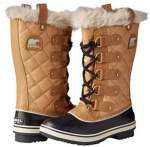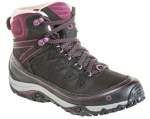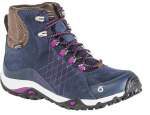Typically, you will see statements that toenails hurt after hiking because your toes ram into your hiking boots or shoes. This may be so in many cases, but there is yet another less obvious reason for the pain.
Women vs Men Boots for Hiking & Mountaineering
When you make a comparison of women vs men boots for hiking and mountaineering, you will see some essential and some non-essential differences. They are discussed here in the text.
Top 5 Insulated Hiking Boots For Women
The list of top 5 insulated hiking boots for women presented here in the text includes the following models, given in no particular order: Oboz Bridger 7 Insulated BDry. Vasque Pow Pow II boots. Columbia Bugaboot Plus III Titanium. Sorel Women’s Tofino Boots. Ahnu Women’s Northridge Insulated WP Hiking Boot.
Oboz Women’s Juniper 6″ Insulated BDry Boot – Waterproof & Breathable
Oboz Women’s Juniper 6″ Insulated BDry Boot is a new winter hiking boot on the market, waterproof and breathable, and with 200 grams of synthetic insulation.
Oboz Sapphire Mid B-Dry Hiking Boots For Women – Very Durable
Oboz Sapphire Mid B-Dry Hiking Boots For Women are lightweight but durable all-leather hiking boots with a great traction and a good ankle support. The waterproof nubuck leather used in the construction requires some break-in time.




